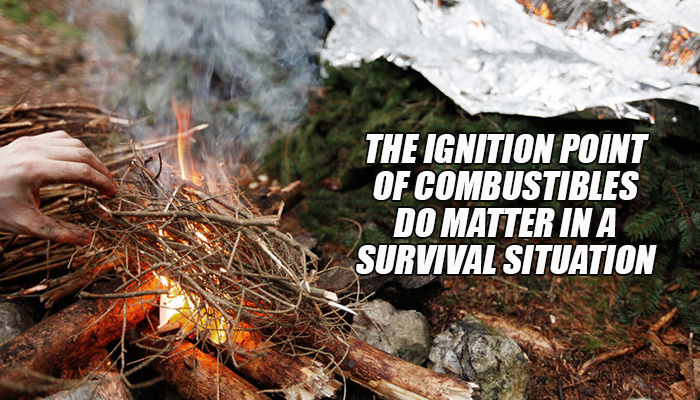
Before we get started, here are some definitions, and temperature ranges, which might be of interest.
Piloted ignition: The use of a flame, spark, or hot surface to ignite any given fuel.
There are various terms and explanations out there, but piloted ignition is easy to remember and understand because we all know what a pilot light is on a gas stove or heater. It is a flame that is exposed to a fuel, either propane or natural gas or even diesel/biofuel used in certain heaters. The flame, then, of course, ignites the combustibles just as a match or lighter flame would. The flame makes contact and the time contact is required for ignition depends on the combustible.
Autoignition: The radiant heating can ignite the fuel on its own without an external source such as a flame or spark.
Auto ignition is simple as well. Put a piece of paper, for example, in an oven or kiln and then crank the heat up and soon the paper would burst into flame without a flame or spark touching the paper before ignition. The heat generated around the paper would cause the paper to combust.
Temperatures
- Paper will auto ignite at temperatures between 424 and 475 degrees Fahrenheit or simply touch a flame to it and it will catch fire, remember piloted ignition.
- Wood must be heated to a temperature of 806 degrees Fahrenheit. Sapwood (Ponderosa Pine, for example) ignites between 400 and 610° F. These figures are of course approximates only. Much depends on the wood density, moisture content and so forth.
Wood shavings, sawdust and dry pulp fluffed up, of course, can be ignited using a flame or spark and the auto ignition would be lower than the above-stated temperatures. Wood put in an oven or kiln at 800 degrees may very well char or smolder and never burst into flames depending on the wood’s characteristics.
- According to the U.S. Department of Agriculture, studies on wood ignition conclude that there is not a fixed temperature for ignition, and the moment of ignition largely depends on the amount of exposure time, the density of the wood and the type of wood.
- Temperature for cotton is 250 ℉
- Newspaper between 427 and 480 ° F
- Toilet paper 420 to 460 ° F
More surface area means more oxygen flow, and this is essential, thus, fluffing up paper towel or pulling apart the fibers of cotton string or material, for example, would increase your chances of the material combusting. Cotton balls are a good example, as well, and we all have seen Cody and Dave fluff up dry tinder before touching a match or striking a spark with flint and steel or when using a Ferro rod. Dave was particularly fussy about creating more surface area when he demonstrated how to ignite Duck Tape using a spark. He created pockets to increase the oxygen level for the flame.
What Is Used To Ignite Combustibles?
In a survival situation, you would use piloted ignition, which is contact with a combustible using a flame, spark, or hot surface. The important thing to remember is contact, whereas auto ignition there is no contact per say.
Flame, spark, or hot surface, a hot surface, for example, could be an ember created by a bow and spindle, cigar or cigarette ember or a piece of metal heated until it glows. Of course, if you can heat metal in the woods until it glows you wouldn’t have any problems with fire, but that is an example of a hot surface, which by the way could also be a manifold pipe on a motorcycle or motor vehicle, so always be thinking hot surfaces when you need to start a fire. An electric stove element would be another example of a hot surface that would be capable of igniting paper or cotton, or possible wood when contact is made for a sufficient time.
Wood making contact with a hot surface, unless the surface was generating incredible temperatures in many cases would probably just char. It could smolder instead of bursting into flame, which means if you provide oxygen by blowing on it, you could create flame by causing an ember to form and then make contact with another combustible with a lower ignition rate.
Do not make your fire starting complicated. Matches, lighters, Ferro rods and flint and steel are known and trusted sources of flames and sparks. Never leave home without some of, or all of the above. Your Every Day Carry (EDC) should always include a trusted fire starting method, one that produces flame or spark, and dry tinder.
Oregon State. (n.d.). Retrieved 2016, from ir.library.oregonstate.edu/xmlui/bitstream/handle/1957/…/Bulletin%20No.%2026.pdf?
The United States Department of Agriculture. (n.d.). Retrieved 2016, from https://www.usda.gov/wps/portal/usda/usdahome